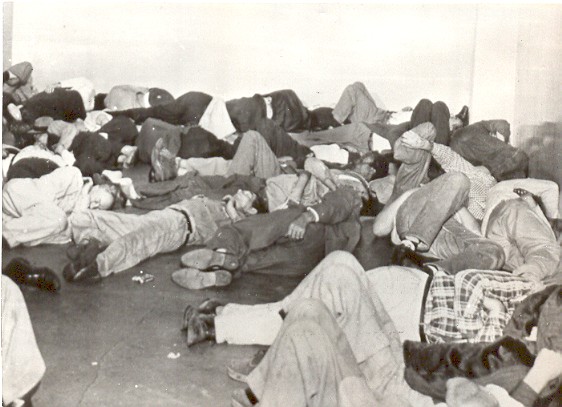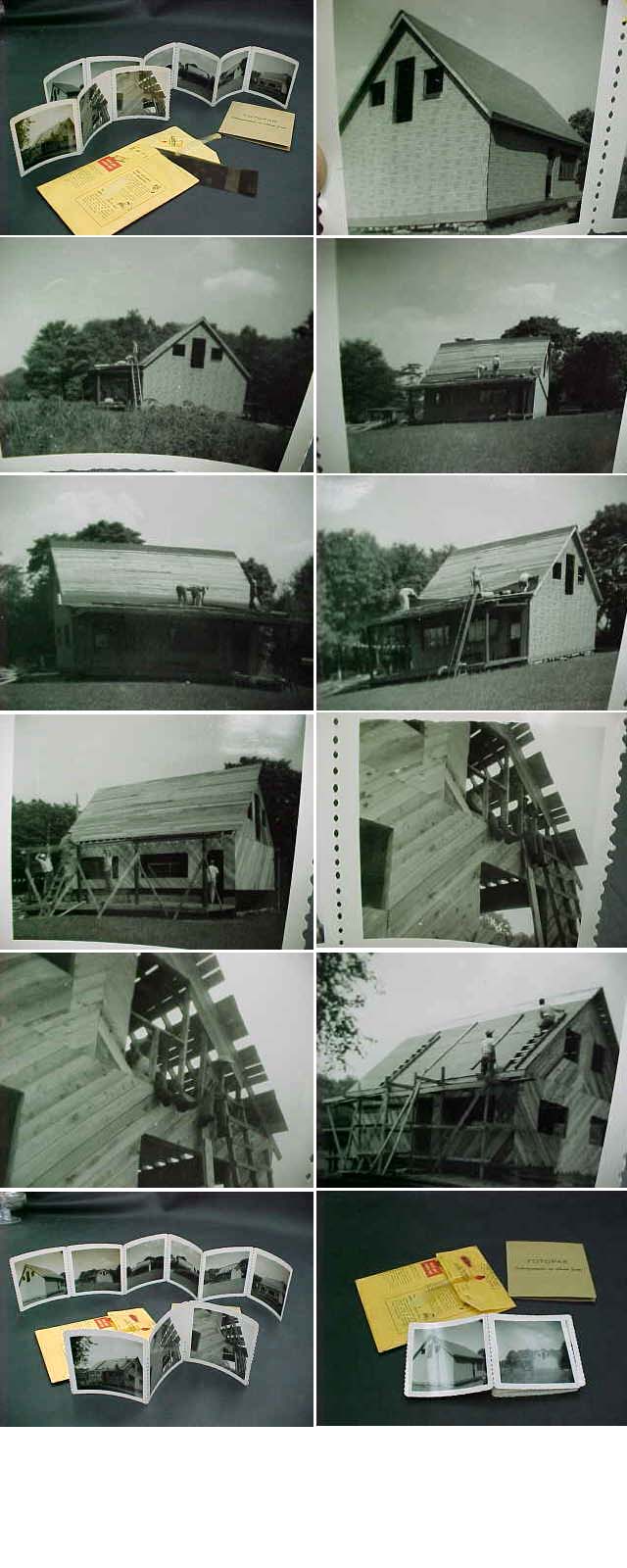Schwarz
View current page
...more recent posts
monuments of passaic
video stream princeton lecture archive
via tesugen blog / lots of good science/art architecture (see previous schwarz post) poly sci and eno material in his archives
Wanted: Umberto Eco Quote On Architecture
I'm translating a text I've written into English, in which I'm quoting Umberto Eco from the Swedish translation of his out of print La struttura assente. In this book, Eco devotes several chapters to a discussion on semiotics and architecture. The passage I'm quoting, and would like the English translation of, can be found on the first page of the major chapter titled “Function and the Sign” (or something equivalent).
Here's my attempt at a translation:
Jeffrey Lewis History of Punk on the Lower East Side - Stream it in: Realaudio or MP3. It's a nine-minute tour de force tracking New York punk from Harry Smith to the New York Dolls
hissssssssssssssssssss
Billy Klüver
In the first part of the paper I will discuss how the universalist attitude toward town planning, as stated in Le Corbusier’s La Charte d’Athènes (1943), was challenged by the younger CIAM members who were looking for an approach that would take into account the individual, as expressed in their “Statement on Habitat/Doorn Manifesto” (1954). In the second part I will examine the manner in which they balanced this thinking with universalist ideal as demonstrated in the project they presented at CIAM 9 (1953) and CIAM 10 (1956). In the third section I will examine their stance against universalization as expressed in their critique of the CIAM “grid,” both as an epistemological framework and method of presentation. The protagonists who made contributions to this new way of thinking are referred to as the ‘younger members’ before September 1954 – when they were first recognized as Team 10.
hiving mesh
The utopias proposed by [Yves] Klein and Superstudio are rooted in an architectural systems aesthetics that mobilized the immaterial as a form of instrumental and political critique. Its origins can be found in the challenge to entrenched modern planning ideals launched by the Team 10(7) architectural group in postwar Britain, a time in which new techniques of military Operations Research and cybernetics were being made public. These had advanced a form of systems thinking that saw complexes of people and machines as information processing systems governable through procedures of decision and control. For Team 10, cities and buildings were no exception. Social change, previously imposed top-down by an avant-garde who assumed an a priori agency of architecture in bringing it about, was now seen as emerging bottom-up from society's own internal processes, which architecture and planning were to steward. The task of the designer was to build the hardware—the amplifiers, attenuators, and gates that regulated the rate and intensity of flow within those systems. At minimum, architecture was to be designed to not get in its way.
renzo piano for the hour on charlie rose
De l'Ecotais reveals the difference between the working methods of the two pioneers of the absurd: "Marcel Duchamp looked for his ready-mades in department stores, randomly, at a given moment. He then gave them titles and signed them. Man Ray, on the other hand, usually constructed images from everyday objects, which were then deliberately transformed by photography. It is the fact of being reproduced and relabelled which gives life to the objects."
So I guess Man Ray, who died in 1976, would have been delighted at the two dates on the Canberra label. But would he insist on the new versions being destroyed so that a third date might be added in future? As Umberto Eco famously wrote: "When originals no longer exist, the last copy is the original."
.........................................................................................................................................................................
"Gentlemen, I will now show you this text. Forgive me for using a photocopy. It's not distrust. I don't want to subject the original to further wear." "But Ingolf's copy wasn't the original," I said. "The parchment was the original." "Casaubon, when originals no longer exist, the last copy is the original."
-- Foucault's Pendulum, Chapter 18
"From the beginning, Olmsted and Vaux strenuously opposed all attempts to introduce art into the park. In their Greensward Plan of 1858—the competition entry that won them the commission—they wrote that while it would be possible to build elegant buildings in the park, "we conceive that all such architectural structures should be confessedly subservient to the main idea, and that nothing artificial should be obtruded on the view." They considered art a similar distraction from the restorative purpose of the landscape and kept statues out of the park. The sole exceptions were Emma Stebbins's Angel of the Waters, atop the Bethesda Fountain, and a series of figures representing prominent Americans that were to adorn the Terrace, but were never erected due to a shortage of funds."
By not burying a thing the dirt enters into the concept, and little enough separates the dirt inside the excavation from that outside.
Claes Oldenburg
"This account of Earthworks, sculptures best known as enormous mounds and excavations in remote wilderness environments, begins by looking into a hole dug in New York City's Central Park. The very fact that on Sunday, October 1, 1967, an excavation as a work of art was produced by Claes Oldenburg, one who can not be considered an earthworker but who was an innovator in the realms of Happenings and Pop Art, suggests the status in the art world at that time of working with geological material. Exactly a year later, at the Dwan Gallery in New York City, documentation of this work and also other sculpture by Oldenburg would go on view among sculpture by nine other artists in the exhibition earth works, the debut of the genre. Dug a year before that show brought the movement to widespread public attention, Oldenburg's temporary trench epitomizes the multiple sources of Earthworks and the relation of these works to the "dirt" around them."
L.A. drunk tank, 1955
John Cage & Morton Feldman: A Conversation
I love this 3-hour conversation between Morton Feldman and John Cage recorded in 1967. An excerpt:
Morton Feldman: Well, this weekend I was on the beach.
John Cage: Yes.
MF: ... And on the beach these days are transistor radios.
JC: Yes.
MF: ... blaring out rock 'n' roll.
JC: Yes.
MF: All over.
JC: Yes. And you didn't enjoy it?
MF: Not particularly. I adjusted to it.
JC: How?
MF: By saying that... Well, I thought of the sun and the sea as a lesser evil.
JC: You know how I adjusted to that problem of the radio in the environment? Very much as the primitive people adjusted to the animals which frightened them, and which, probably as you say, were intrusions. They drew pictures of them on their caves. And so I simply made a piece using radios. Now, whenever I hear radios - even a single one, not just twelve at a time, as you must have heard on the beach, at least - I think, "Well, they're just playing my piece."
frank stella
west broadway, 1958
seward park, 1958
untitled, 1958
boozy
jc hse
happy valentines day
[sheet iron and straw]
A 'Mini-Meier' Planned
A small condominium building will soon go up at 163 Charles Street, behind the new Richard Meier tower in the West Village. Call it mini-Meier.
The developer Barry Leistner bought the site, a 22-foot-wide, three-story brick building behind the newest of the three Meier towers on West Street, in December for $5.9 million. The previous owner had hired the architect Zaha Hadid to create a condo tower for the site, but then scrapped his plans and sold the property.
Now, the architect Daniel Goldner has designed an eight-story brick-and-glass building that will include an upper triplex, two 2,100-square-foot duplexes and ground floor commercial space. Mr. Leistner plans to live in the triplex and will sell the duplexes for about $2,000 a square foot.
Like the Meier building next door, Mr. Leistner promises high ceilings, floor-to-ceiling windows, radiant heat and basement wine cellars.
"It's a high-end neighborhood and it needs a high-end product," he said. "They've transformed the neighborhood and that's what happens."
Question: How do you know when there is a real-estate bubble? What do you measure, what factors are involved and how do you calculate it?
-- Zack, Laguna Beach, Calif.


